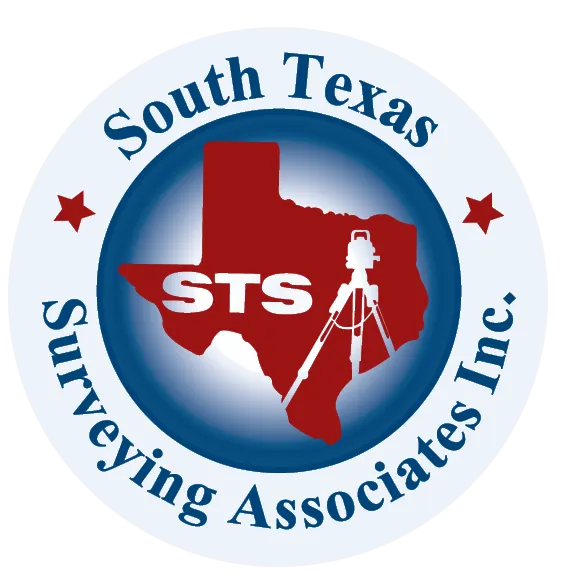Surveying Texas Since 1980 Family Owned, Customer Devoted | Firm #10045400 | 281-556-6918
See Our Latest Blogs

Advancements in Topographic Surveys for Texas Real Estate
"Texas, often referred to as the Lone Star State, is a thriving hub for economic growth and innovation, making it an attractive destination for commercial real estate investment." - Chris Evans
Advancements in Topographic Surveys for Texas Real Estate
Topographic surveys are essential for real estate development, providing detailed information about a property’s physical features, including elevation, vegetation, and man-made structures. Over the years, advancements in technology have revolutionized how these surveys are conducted, improving accuracy, efficiency, and affordability. In Texas, where diverse landscapes pose unique challenges, these advancements are particularly transformative.
This blog explores the latest technological breakthroughs in topographic surveys and how they are shaping the future of Texas real estate development.
The Importance of Topographic Surveys in Texas Real Estate
Topographic surveys play a vital role in real estate projects by providing the foundational data needed for site planning, design, and construction. They help developers:
Understand land elevation and slope for grading and drainage systems.
Identify natural and man-made features that may impact development.
Ensure compliance with local, state, and federal regulations.
Reduce risks by uncovering potential obstacles early in the process.
With Texas's diverse terrains—ranging from the flat plains of West Texas to the rolling hills of Central Texas—topographic surveys are indispensable for navigating the state’s unique challenges.
Technological Advancements in Topographic Surveys
Modern technology has transformed traditional surveying methods, making topographic surveys faster, more accurate, and more cost-effective. Here are some of the key advancements:
1. Drone Technology
Drones equipped with high-resolution cameras and LiDAR sensors have become a game-changer in topographic surveys. These unmanned aerial vehicles (UAVs) can capture detailed images and elevation data quickly, even in hard-to-reach areas.
Benefits of Drones:
Collect data over large areas in a fraction of the time.
Provide accurate, high-resolution imagery.
Minimize disruption to the site and surrounding environment.
Reduce labor costs compared to traditional methods.
In Texas, where large tracts of land are common, drones are particularly valuable for surveying expansive properties.
2. LiDAR Technology
LiDAR (Light Detection and Ranging) uses laser pulses to measure distances and create detailed 3D models of the land. This technology is highly effective for mapping terrain, vegetation, and structures with unparalleled precision.
Advantages of LiDAR:
Penetrates vegetation to reveal ground-level features.
Produces highly accurate elevation data, even in rugged terrains.
Integrates seamlessly with other surveying tools, such as drones and GIS.
LiDAR is especially useful in regions like the Texas Hill Country, where dense vegetation and uneven terrain can complicate traditional surveys.
3. 3D Modeling and BIM Integration
3D modeling software allows surveyors to create detailed visual representations of the land, making it easier for developers, architects, and engineers to plan projects. Many modern surveys also integrate with Building Information Modeling (BIM) systems, which streamline the design and construction process.
Benefits of 3D Modeling:
Provides a clear visual of the site’s features.
Enhances collaboration among project stakeholders.
Reduces design errors and construction delays.
4. GPS and GNSS Technology
Global Positioning Systems (GPS) and Global Navigation Satellite Systems (GNSS) have improved the accuracy of land surveys by providing precise geospatial data. These tools allow surveyors to pinpoint locations and measure distances with incredible accuracy.
How GPS and GNSS Help:
Enable real-time data collection and analysis.
Improve survey efficiency, reducing project timelines.
Ensure consistency across large-scale projects.
5. GIS Integration
Geographic Information Systems (GIS) integrate topographic data with other geographic information, such as zoning maps, floodplain data, and infrastructure networks. This provides a comprehensive overview of the property and its surrounding environment.
Advantages of GIS:
Combines multiple data layers for better decision-making.
Supports environmental impact studies and regulatory compliance.
Offers interactive maps for enhanced project visualization.
Benefits of Technological Advancements for Texas Real Estate
The adoption of these advanced tools and technologies has brought significant benefits to real estate developers, surveyors, and other stakeholders in Texas:
1. Enhanced Accuracy Traditional surveys relied heavily on manual measurements, which could lead to errors. Modern tools like LiDAR and GPS have reduced inaccuracies, providing developers with precise data they can trust.
2. Faster Turnaround Times Technology like drones and GIS allows surveyors to collect and analyze data more quickly. This means projects can move forward without delays, saving time and money.
3. Cost-Effectiveness While advanced tools require upfront investment, they often reduce overall costs by streamlining workflows, minimizing labor, and avoiding costly mistakes during construction.
4. Better Risk Management By providing detailed insights into a property’s topography and potential challenges, advanced surveys help developers mitigate risks early in the process. This is particularly valuable in Texas, where natural features like floodplains and karst formations can pose significant risks.
Case Study: Using Advanced Surveys in Texas Real Estate
A recent commercial development in Houston showcases the impact of advanced topographic surveys. The project involved building a retail center on a site prone to flooding. Using drones and LiDAR, surveyors identified low-lying areas that required elevation adjustments to prevent water damage.
Additionally, GIS tools helped the developers analyze nearby drainage systems and integrate them into the site’s design. As a result, the project was completed on time and met all regulatory requirements, saving the developers from potential delays and penalties.
How South Texas Surveying Leads the Way
At South Texas Surveying, we embrace the latest advancements in topographic surveying to deliver exceptional results for our clients. Our team uses cutting-edge tools like drones, LiDAR, and GIS to provide accurate, efficient, and cost-effective surveys for projects of all sizes.
Whether you’re developing residential properties in Austin or planning commercial projects in Dallas, we have the expertise and technology to support your goals.
Final Thoughts
Advancements in topographic surveying technology are transforming the real estate industry in Texas, enabling developers to plan smarter, build faster, and minimize risks. By leveraging tools like drones, LiDAR, and GIS, surveyors can provide the precise data needed to tackle even the most challenging projects.
If you’re planning a real estate development in Texas, contact South Texas Surveying to learn how our advanced surveying services can set your project up for success. Let’s build the future of Texas real estate together.
Delivering Land Surveys with Attention to Detail
George Owens
Commercial Broker

I have worked with many surveying companies, but South Texas Surveying stands out for their exceptional professionalism, attention to detail, and commitment to their clients.
Kim Wexler
Project Manager

Their accurate and thorough surveys make my job a lot easier, their ability to communicate effectively with all parties involved is commendable. I highly recommend South Texas Surveying.
James Cart
Homeowner

As a new homeowner, I was thoroughly impressed with the professional service provided by South Texas Surveying. I high recommend their services to any one buying a home in Houston.
Contact Us
Email: [email protected]
Office Address: 11281 Richmond Ave
BLDG J, Suite 101,
Houston, TX 77082
Office Hours: Mon – Fri 8:00am – 5:00pm
Office Phone Number: 281-556-6918
11281 Richmond Ave
BLDG J, Suite 101,
Houston, TX 77082
Firm Number: 10045400
Resources
© Copyright 2024 South Texas Surveying Associates
